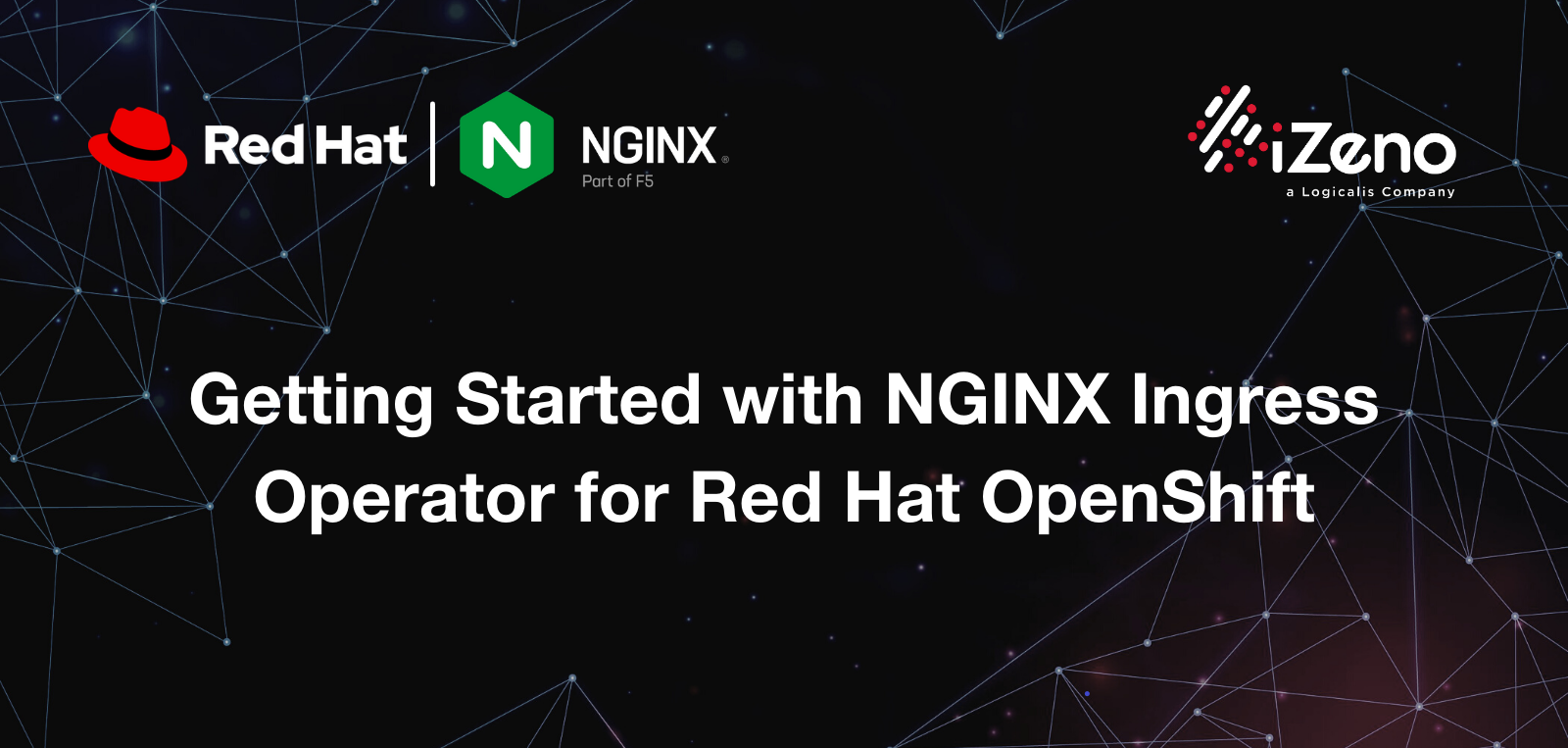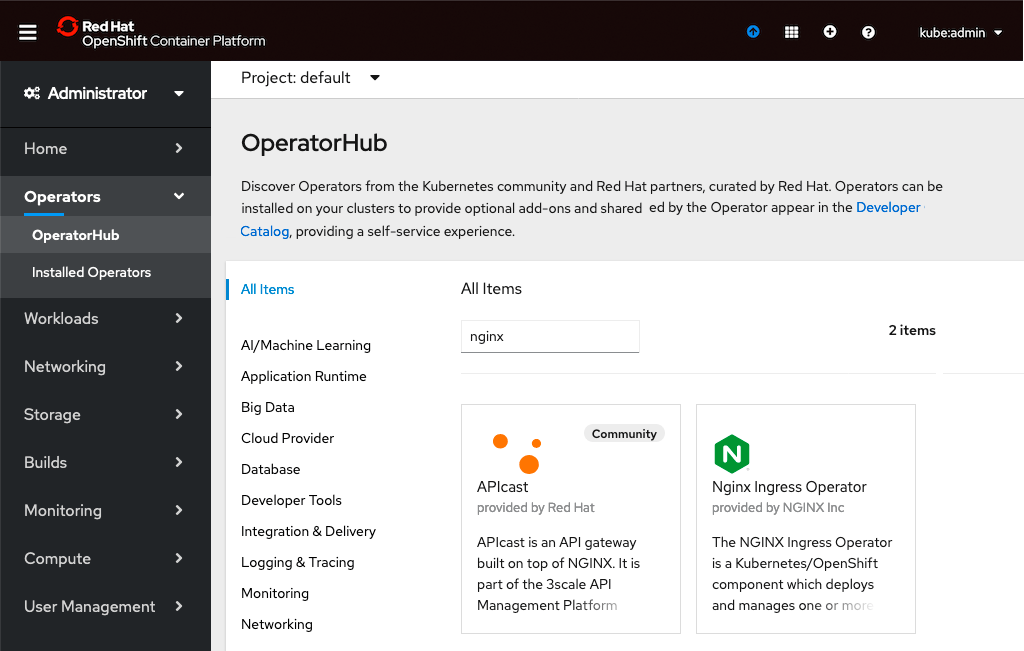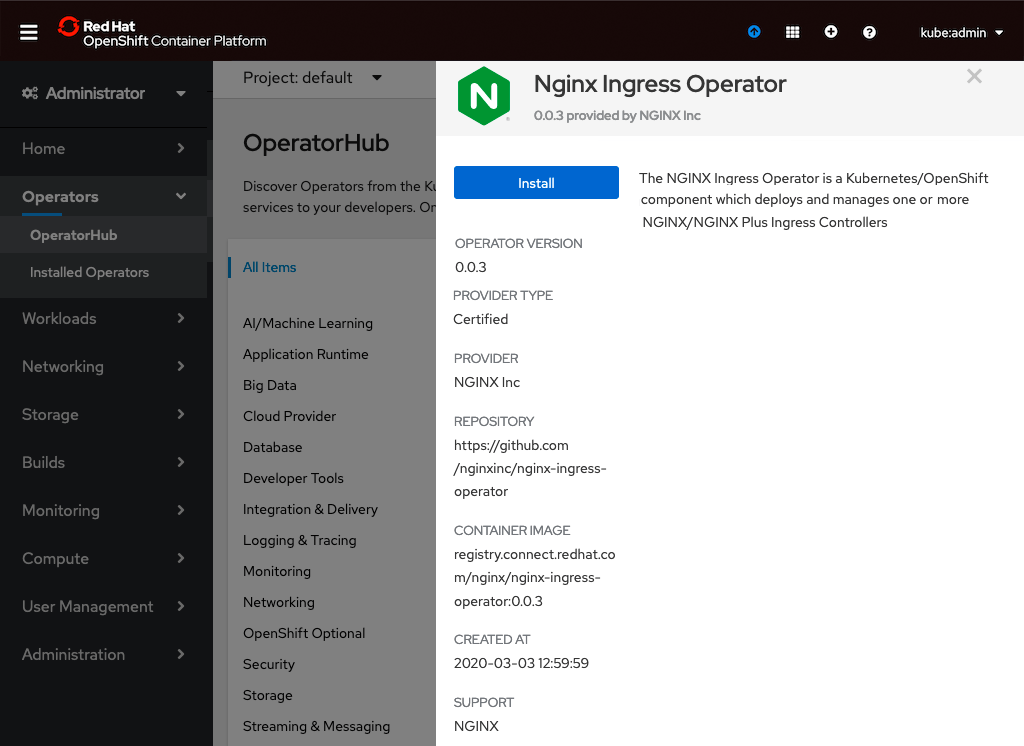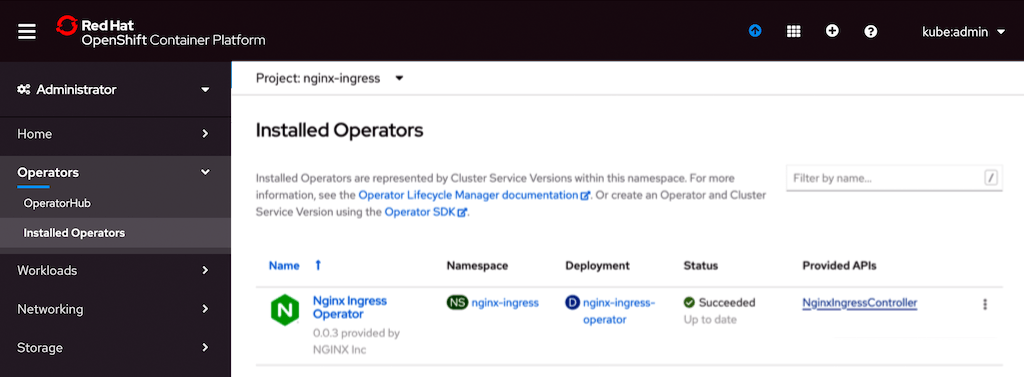In the partnership between F5 with Red Hat, F5 continue to focus on supporting enterprise users who require a high‑performance, scalable, long‑term solution for DevOps‑compatible service delivery in OpenShift. The NGINX Ingress Operator for OpenShift is a supported and certified mechanism for deploying NGINX Plus Ingress Controller for Kubernetes alongside the default router in an OpenShift environment, with point-and-click installation and automatic upgrades. You can leverage the Operator Lifecycle Manager (OLM) to perform installation, upgrade, and configuration of the NGINX Ingress Operator.
We install the NGINX Ingress Operator from the OpenShift console.
- Log into the OpenShift console as an administrator.
- In the left navigation column, click Operators and then OperatorHub. Type nginx in the search box, and click on the Nginx Ingress Operator box that appears.
- After reviewing the product information, click the Install button.
- On the Create Operator Subscription page that opens, specify the cluster namespace in which to install the operator (in this example it’s nginx-ingress). Also click the Automatic radio button under Approval Strategy, to enable automatic updates of the running Operator instance without manual approval from the administrator. Click the Subscribe button.
- After the installation completes, run this command in a terminal to verify that the Operator is running:
- Click Installed Operators in the left navigation column. On the page that opens, click the NginxIngressController link in the Provided APIs column. NginxIngressController is a custom resource which the Operator uses to deploy the NGINX Plus Ingress Controller on the OpenShift cluster.
- On the page that opens, paste a manifest like the following example into the text field, and click the Create button to deploy the NGINX Plus Ingress Controller for Kubernetes deployment.Note that we are embedding a Secret with a TLS certificate and key in the
defaultSecretandwildcardTLSfields. This enables TLS termination and passthrough without requiring the Secret to be included in the Ingress policies.There are numerous options you can set when configuring the NGINX Plus Ingress Controller for Kubernetes, as listed at our GitHub repo.
- To verify the deployment, run the following commands in a terminal. As shown in the output, the manifest we used in the previous step deployed two replicas of the NGINX Plus Ingress Controller and exposed them with a
LoadBalancerservice. (The output from thegetcommand is spread across multiple lines for legibility.)
- Run the following command to verify that the NGINX Plus Ingress Controller responds to requests. For
public_IP_addresssubstitute the external IP address of theLoadBalancerservice exposing the NGINX Plus Ingress Controller.Notice that at this point the command returns404NotFound. That’s because we haven’t yet configured and deployed an Ingress resource to route traffic to the backend Pods. For more information, see our documentation.
Note that end users can submit multiple manifests of the NginxIngressController resource and a separate deployment is created for each one. The Operator also supports deployments across different namespaces. The namespace can be specified in the
metadatasection of the manifest.
What’s Next?
The NGINX Ingress Operator helps you manage your NGINX Plus Ingress Controller deployment, in particular with:
- Configuration – Launch a basic deployment with just a few input parameters and one manifest
- Scaling – Add and remove replicas seamlessly
- Upgrading – Leverage rolling updates with no downtime
- Uninstalling – Ensure that all Operator and Kubernetes Ingress Controller objects are properly and safely removed
Now that you have the NGINX Plus Ingress Controller ready and deployed, see our documentation and GitHub repo to use the advanced capabilities of NGINX Plus in OpenShift.
Article Source: Amir Rawdat of F5, published on April 30, 2020, https://www.nginx.com/blog/getting-started-nginx-ingress-operator-red-hat-openshift/ Tags: Red Hat, OpenShift, NGINX Ingress Controller
Read more: https://izeno.com/red-hat-practice/
Red Hat Advanced Solution Partner

Experienced Red Hat Advanced Solution Partner
As Red Hat Advanced Partner of the year, iZeno Certfiied Red Hat and DevOps experts in Singapore, Malaysia, Thailand and Indonesia can help your enterprise leverage on Red Hat Open Shift, Red Hat Ansible Automation platform, Red Hat OpenStack platform and Red Hat Cloud forms. We help our enterprise clients to take full advantage of the cloud and package their applications with containers, embrace modern architectures using agile techniques.
Get in touch with us
Thank you for choosing to get in touch with us!
To ensure efficient service, please fill out the form below and we will be in contact shortly. Alternatively, you can reach us directly through our listed contact details for any urgent inquiries.









